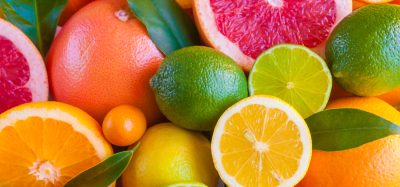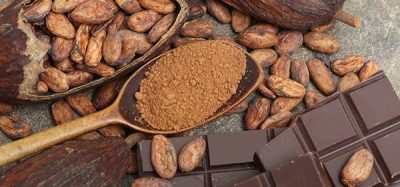The impact of natural ingredients on the manufacture of soft drinks
- Like
- Digg
- Del
- Tumblr
- VKontakte
- Buffer
- Love This
- Odnoklassniki
- Meneame
- Blogger
- Amazon
- Yahoo Mail
- Gmail
- AOL
- Newsvine
- HackerNews
- Evernote
- MySpace
- Mail.ru
- Viadeo
- Line
- Comments
- Yummly
- SMS
- Viber
- Telegram
- Subscribe
- Skype
- Facebook Messenger
- Kakao
- LiveJournal
- Yammer
- Edgar
- Fintel
- Mix
- Instapaper
- Copy Link
Posted: 11 January 2013 | Cheryl Walker, Analytical Development Technologist, Britvic Soft Drinks Ltd | No comments yet
The soft drinks industry used to be fairly straightforward – there was a core group of products that were traditionally made and they were generally coloured and flavoured with synthetic materials, contained a lot of sugar and were preserved with sodium benzoate and / or sulphur dioxide. They were bottled in either glass, PET, multilayer cartons or metal cans. Shelf lives were generally around 12 months and storage was at ambient temperatures. The development of the artificial sweeteners meant that Diet and No Added Sugar products could also be offered. Labelling was fairly straightforward, and naturally derived colours, flavours and sweeteners were for premium and niche products.
For the purposes of this article, I am looking at flavours, colours and sweeteners of natural origin, i.e., extracts of fruit, vegetables, plants and flowers. Surveys carried out by ingredient manufacturers and by research organisations have shown broadly similar data. The levels of preference for products perceived as natural is generally given as between 70 and 80 per cent, and there is a similar level of perception that natural foods are healthier.
The definition of ‘natural’ is problematic because the consumer perception of natural links ‘naturalness’ to ingredients and processes seen in their own homes, with a preference for simplicity in labelling. Various surveys have been carried out to explore this, particularly in regard to consumer opinions on natural foods and the concept of clean label products.
The soft drinks industry used to be fairly straightforward – there was a core group of products that were traditionally made and they were generally coloured and flavoured with synthetic materials, contained a lot of sugar and were preserved with sodium benzoate and / or sulphur dioxide. They were bottled in either glass, PET, multilayer cartons or metal cans. Shelf lives were generally around 12 months and storage was at ambient temperatures. The development of the artificial sweeteners meant that Diet and No Added Sugar products could also be offered. Labelling was fairly straightforward, and naturally derived colours, flavours and sweeteners were for premium and niche products. For the purposes of this article, I am looking at flavours, colours and sweeteners of natural origin, i.e., extracts of fruit, vegetables, plants and flowers. Surveys carried out by ingredient manufacturers and by research organisations have shown broadly similar data. The levels of preference for products perceived as natural is generally given as between 70 and 80 per cent, and there is a similar level of perception that natural foods are healthier. The definition of ‘natural’ is problematic because the consumer perception of natural links ‘naturalness’ to ingredients and processes seen in their own homes, with a preference for simplicity in labelling. Various surveys have been carried out to explore this, particularly in regard to consumer opinions on natural foods and the concept of clean label products.
The soft drinks industry used to be fairly straightforward – there was a core group of products that were traditionally made and they were generally coloured and flavoured with synthetic materials, contained a lot of sugar and were preserved with sodium benzoate and / or sulphur dioxide. They were bottled in either glass, PET, multilayer cartons or metal cans. Shelf lives were generally around 12 months and storage was at ambient temperatures. The development of the artificial sweeteners meant that Diet and No Added Sugar products could also be offered. Labelling was fairly straightforward, and naturally derived colours, flavours and sweeteners were for premium and niche products.
For the purposes of this article, I am looking at flavours, colours and sweeteners of natural origin, i.e., extracts of fruit, vegetables, plants and flowers. Surveys carried out by ingredient manufacturers and by research organisations have shown broadly similar data. The levels of preference for products perceived as natural is generally given as between 70 and 80 per cent, and there is a similar level of perception that natural foods are healthier.
The definition of ‘natural’ is problematic because the consumer perception of natural links ‘naturalness’ to ingredients and processes seen in their own homes, with a preference for simplicity in labelling. Various surveys have been carried out to explore this, particularly in regard to consumer opinions on natural foods and the concept of clean label products. One of the most recently reported was commissioned by Kampffmeyer Food Innovation and reported online by Food Quality News1 confirming trends previously noted in a study carried out in Australia to investigate consumer perception of naturalness, published in Appetite in 20102, which explored the impact of ingredients and processing on consumer preferences. The authors concluded that ingredients should not be labelled with chemical names or E numbers but rather with easily recognised names – for example, vitamin C rather than ascorbic acid or E300. The regulations echo this drive for simplicity and minimal processing with their requirement for non-selective extraction using traditional technologies to retain the compositional profile of the raw material. The permitted modes of extraction and concentration are traditional and mainly physical, including crushing, chopping, pressing and water, or alcoholic extraction followed by a concentration and / or refining step.
The change from using synthetic colours and flavours in soft drinks has been a growing trend since the early 1990s, driven by consumer concerns about food additives. Similarly, the increased demand for lower sugar content in products has been driven by more recent health concerns and social pressures, but has now morphed into a move toward more natural intense sweeteners. Changes from full sugar to low calorie products made with intense artificial sweeteners have now been followed by increasing demand for more natural intense sweeteners like stevia, isomaltulose and thaumatin. This trend reflects a change in the food industry as a whole that is, I believe, unique in that it has been solely driven by consumer demand. That is to say, other changes have taken place for technical or commercial reasons with the resulting products being enthusi – astically taken up by consumers but this change has been taken up by industry as the result of consumer preference, and it has affected the whole of the food industry.
Legislation has also developed. As the complexity of the ingredients has developed, so the legal definitions and regulation govern – ing usage and labelling have also evolved. Ingredient authenticity and safety has become more of an issue than it was when the colours, flavours and sweeteners were low cost, pure chemicals whose composition was easily checked. Regulations have had to change to keep up with the changes in industry and consumer expectations, the lack of a legal definition of ‘natural’ and the intricacy of the definitions of natural colours, extracts and flavours has created its own challenges.
At one time, naturally coloured drinks were seen as virtuous but dull, the range of shades available was limited and the colours were not as intense or stable as the synthetics that they replaced; they looked weaker. It is a truism, but the colour of a drink and its intensity do influence the perception of taste – the flavour is in part just a confirmation of what the consumer has already decided the product will taste like.
In the mid-1990s, the proportion of drinks made using natural colours formed less than a third of the products available; the proportion increased during the early 2000s, and then came the Southampton study in 2007. Consumer pressure led to a change in labelling regulations for colours and a huge increase in the number of drinks reformulated to use natural colours. Surveys since then quote levels of consumer preference for natural colours at more than 85 per cent. Synthetically coloured soft drinks are now the exception rather than the rule.
Natural flavours, mainly essential oils, were seen as superior in taste and adding a premium value to products they were used in. The synthetic flavours were intense and lacked the subtlety and complexity of natural flavours. Nature identical flavours were a halfway house – chemically pure like the synthetics, but more subtle and natural tasting with better stability and consistency than natural extracts. Perception of flavour is only partly due to the chemistry of the flavour itself the interaction with the acid / sweetness / viscosity balance in the product will change the intensity of the perceived flavour profile and this interaction is sometimes exploited in reduced sugar formulations.
Recreating the sweetness and textural profile of sucrose using intense sweeteners to give calorie reduction requires the use of a thickening agent and the options were once limited to the use of combinations of aspartame, acesulfame-K and saccharin with gums or starches, until sucralose became available. The arrival of plant extracts like stevia, sea buckthorn, monk fruit and thaumatin has created new possibilities although they all have particular challenges. It has changed the way in which formulations are created because it is not as simple as substituting these new ingredients for the old ones, they behave very differently in products and developers have to look at subsidiary ingredients to mask elements like aftertaste and bitterness.
The high cost of natural flavours – particu – larly those based on essential oils – and their lack of stability meant that their use was previously restricted to premium product ranges. The nature identical flavours were for a time the best compromise, offering better stability and a more subtle profile than the pure extracts but at a lower cost per use. Given that soft drinks are generally stored at ambient and have comparatively long shelf lives, fading flavours have presented a particular problem in using natural flavours. However, developments by flavour houses in particular have led to flavours that can be tailored to give the exact profile product developers are looking for with the chance to give a unique character to a product by the use of flavour fractionation, flavour enhancers and bitter blockers. As more exotic blends of fruits are created so the need for this type of tailored, natural, nuanced flavour increases.
So what have these developments meant for the industry? Firstly, let’s consider the changes in processing that have been required. Both naturally derived colours and flavours are very heat sensitive and most processing is based around pasteurisation, so more gentle regimes to protect the sensory characteristics without compromising product safety have had to be developed. As a side benefit, this optimisation has meant more energy efficient processing, and the search for alternatives like high pressure processing where pasteurisation is through pressure rather than temperature. At the same time, the combination of oil soluble colours – the carotenoids – and oil soluble flavours has caused the problem of ringing and this has generally been addressed by the use of homogenisation and the addition of emulsifiers to the formulation. The emulsifiers in turn create the possible issue of hazing in the product as the product ages. So the product changes from a fairly straightforward acidic aqueous matrix into a very complex balance of ingredients whose complexity is driven by the require – ment for a more natural product.
Packaging has also become more than just a physical barrier to contain and protect products – there are intelligent packaging options available to chemically protect the product from change – especially important for soft drinks – now that we have multi-layer PETs, with various combinations of antioxidants, ultra violet blocking compounds and other modifiers combined to overcome the effects of oxygen and light on the product. The main factor in the degradation of colours and flavours is oxidation and changes in packaging are matched with changes in processing to reduce the risk of oxidative damage – so deaerated water is used, nitrogen might be added to modify the gases in the headspace providing an inert layer.
Issues of adulteration and traceability which were once minor have now become of increas – ing concern. Issues like melamine in milk powder and Sudan Red in paprika and chilli extracts happened because the cost of and demand for natural ingredients is increasing. Pressure on supply is exacerbated by the global supply chain and the time it takes to increase supply which then has an impact on product formulation. The growing importance of forming good supply partnerships has become more widely recognised, partly driven by the increased complexity of supply chain but also partly driven by the increased complexity of the ingredients themselves and associated risk assessments. The level of testing and the types of testing now routinely carried out has had to become more stringent to manage these risks as well as the variability in the ingredients themselves. The need for more specialised, complex analyses to test materials and ensure product safety has seen a change from traditional analyses like TLC to HPLC, from GC with FID to GCMS as a routine test. There have been EU led projects based around complex spectroscopic techniques like Raman spectroscopy and NMR to characterise materials and authenticate them, particularly as a response to requirements for Country of Origin Labelling.
Although the change to the use of natural ingredients has created a need for developing better controlled processes, storage and stock rotation it has also opened up new possibilities, and has created new categories of products – some natural colours are functional ingredients with nutritive properties. There are spices, botanical extracts and herbal infusions, now being used to create soft drinks for major brands, which would in the past have only been used for creating niche products. The concept of food as an aid to health is an attractive one, an ingredient like lycopene for example, added to give a colour is also a functional ingredient – a powerful antioxidant – and so can be used to create products which could be eligible for a health claim. Pressure on supply has meant that more exotic fruit, and vegetable, juices are being considered by formulators – we have had to make bolder choices.
Yes, some of the impacts of changing to more natural ingredients have been to increase the technical challenges for manufacturers, to make security of supply more important and to increase the complexity of the measures needed to effectively guarantee product quality and safety. Their use has forced the industry to excise more ingenuity in overcoming their challenges to create viable products, but they have meant a more diverse industry with greater possibilities. Soft drinks have always been a source of refreshment, an attractive source of hydration, but now, the spectrum of products has widened to include nutritional, health promoting and, in some cases, therapeutic products. This aspect has driven research into the properties of natural ingredients and this has led to a greater depth of knowledge, which in turn has driven further development to create more interesting products. A truly virtuous circle of development that has taken us from an industry that not only produces an alternative to alcoholic drinks or water to one that is also valued for improving the quality of our consumers’ nutritional intake.
References
1. www.foodqualitynews.com
2. Evans, G., de Challemaison, B., Cox, D. Consumers’ ratings of the natural and unnatural qualities of foods







